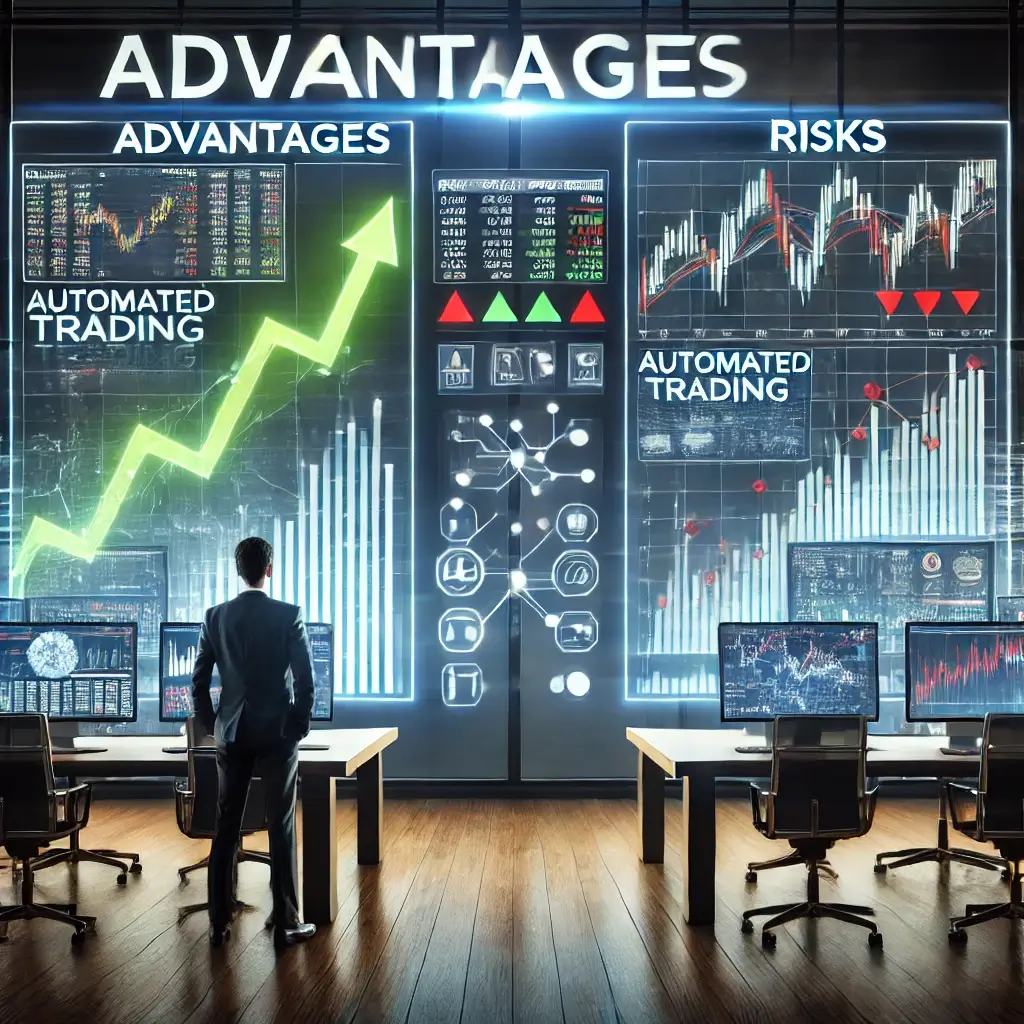Advantages and Risks of Automated Trading
Automated trading has revolutionized how investors operate in financial markets. However, like any investment strategy, it has its pros and cons.
✅ Advantages of Automated Trading
- Eliminates emotions: Bots follow predefined strategies without being influenced by fear or greed.
- 24/7 operation: A bot can trade continuously, even while you sleep.
- Fast execution: Bots react to the market within milliseconds, something impossible for a human trader.
- Backtesting and optimization: You can test strategies with historical data before applying them in real-time.
- Diversification: A bot can handle multiple strategies and markets simultaneously.
⚠️ Risks of Automated Trading
- Technical failures: Software errors or connection issues can lead to unexpected losses.
- Poor configuration: Incorrect bot settings can result in disastrous outcomes.
- Extreme market conditions: In times of high volatility, some bots may not react correctly.
- Total reliance on technology: If the bot’s platform fails, there is no immediate human intervention.
📌 Examples of Use
1. Trend Following Strategy
Imagine you configure a bot to follow a trend-following strategy on Bitcoin. The bot is programmed to buy when the price is above a moving average and sell when it dips below. The bot analyzes price trends and reacts quickly to capitalizing on upward momentum. In a trending market, the bot can earn consistent profits by following the trend without human emotion interfering. However, in sideways or volatile markets, the bot may execute multiple unprofitable trades if the trend is not clearly defined.
2. Arbitrage Trading
Another example is using an arbitrage bot to take advantage of price differences across various exchanges. For example, if Bitcoin is trading for $40,000 on Exchange A and $40,200 on Exchange B, the bot buys from the cheaper exchange and sells on the more expensive one, earning a profit from the price gap. This process is extremely fast and efficient, which humans cannot replicate manually. However, the risk comes from the speed of execution—if the bot encounters any delay or technical glitch, it may miss the arbitrage opportunity, causing losses.
3. High-Frequency Trading (HFT)
In high-frequency trading, bots place thousands of trades per second, using algorithms to capitalize on small price movements. For instance, a bot may monitor small changes in the order book of an asset like Ethereum, executing a series of trades within milliseconds to take advantage of small price discrepancies. The advantages are clear—tiny profits can compound over time. However, the risks include significant technical complexity and the potential for massive losses if the bot misinterprets the data or operates in an unstable market environment.
📢 Conclusion
Automated trading can be a powerful tool if used correctly. However, it is crucial to understand its risks and optimize its settings to avoid unpleasant surprises.

